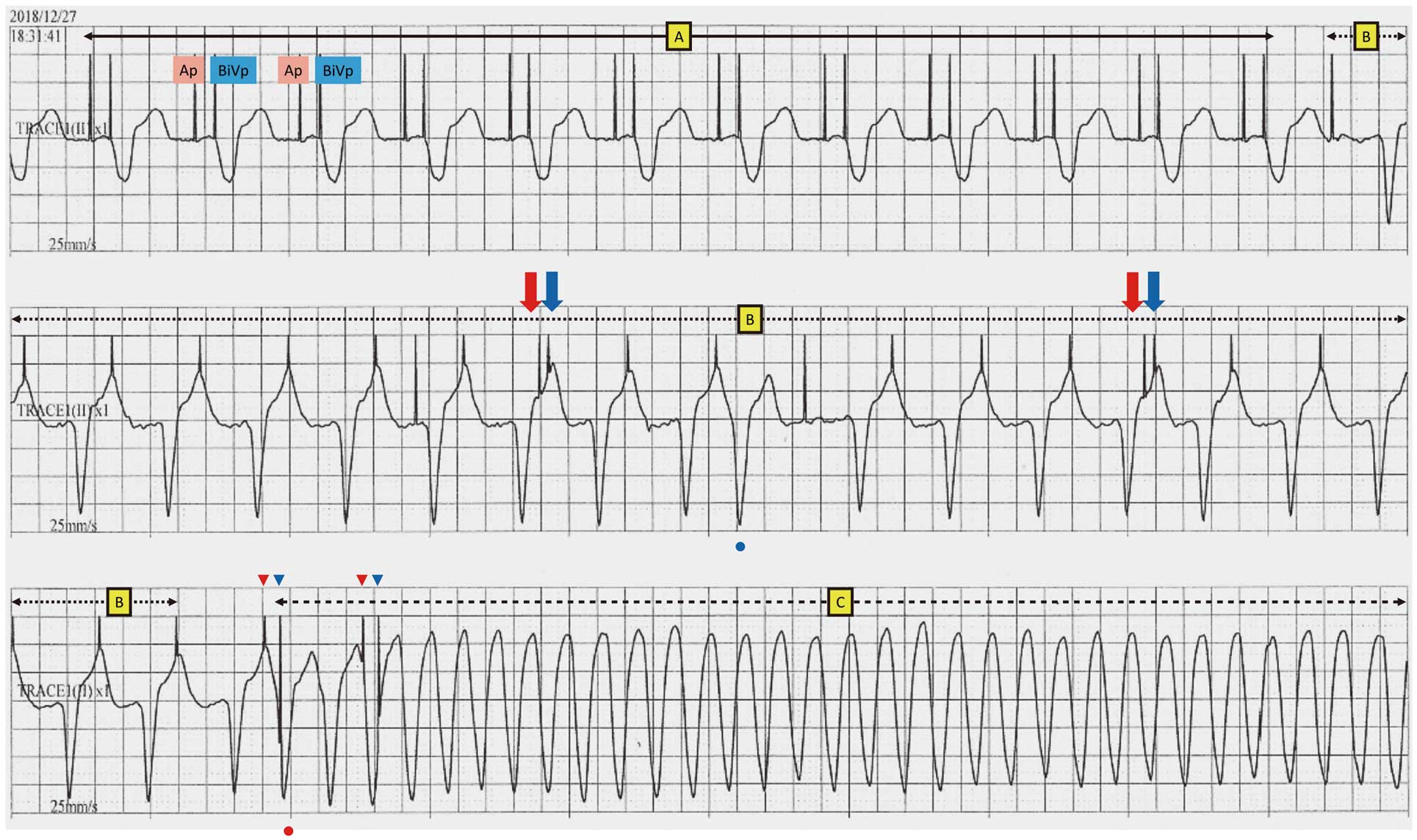2021 年 85 巻 5 号 p. 692-
2021 年 85 巻 5 号 p. 692-
A 57-year-old male who was implanted with a cardiac resynchronization therapy defibrillator (CRT-D; VivaTM XT; Medtronic, Minneapolis, MN, USA) for systolic dysfunction experienced a ventricular tachycardia (VT) storm during heart failure hospitalization. No definitive cause was detected; however, electrocardiogram monitoring demonstrated atriobiventricular pacing at the beginning (Figure [A]) and a subsequent rhythm change due to atrial capture management (ACMTM; Medtronic; Figure [B]),1 followed by a sudden VT (Figure [C]). ACM stimulation seemed to directly induce the VT; however, QRS morphology at VT onset (Figure [C], red circle) was the same as that of the premature ventricular beat (Figure [B], blue circle) and no premature ventricular stimulation preceded the VT, indicating that the VT was not directly induced by the electrical stimulation of the ACM algorithm, but rather by a hemodynamic change during ACM in the absence of biventricular pacing. After ACM discontinuation, no further VT was recorded under intravenous amiodarone and nifekalant, and another non-sustained VT was induced by a challenge test of cardiac resynchronization therapy discontinuation.

Electrocardiogram during atrial capture management (ACM) followed by a ventricular tachycardia (VT). [A] The baseline rhythm is atrial pacing (Ap)-biventricular pacing at 80 beats/min with an atrioventricular (AV) delay of 130 ms. [B] ACM with Ap-ventricular sensing at 95 beats/min and a prolonged AV delay of 295 ms. The blue circle indicates the premature ventricular beats. Double arrows indicate an atrial test pulse (red) and atrial backup stimulus (blue) from the ACM. [C] The VT documented during the ACM. The red circle indicates the onset of the VT. Double triangles indicate crosstalk stimulation, with the blue triangles indicating safety pacing.
N.H. is a member of Circulation Journal’s Editorial Team. M.S. and K.E. belong to an endowed department that is sponsored by Biotronik, Medtronic, Boston Scientific and Abbott. The remaining authors have no conflicts of interest to declare.
The present study was approved by Tokyo Women’s Medical University Ethics Committee (Reference no. 4152-R2).